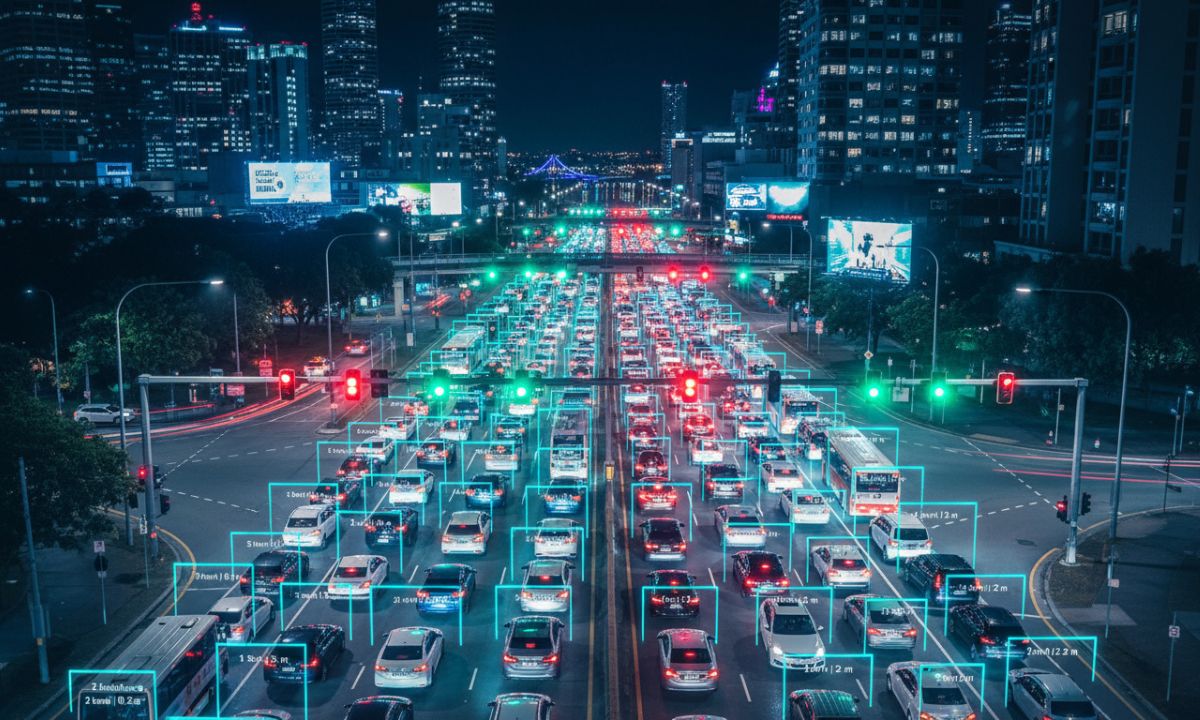Smart Traffic Lights: How AI is Creating Safer Intersections Across Queensland

Imagine you're running late for work, approaching a busy Brisbane intersection, and instead of painfully having to sit through three cycles of traffic lights, the signals, as by magic, change and let you through. It might sound like wishful thinking, but this is the reality Queensland is preparing to deliver through artificial intelligence. It’s a timely shift, considering how Brisbane’s traffic congestion continues to worsen.
Brisbane's ambitious $15 million Smarter Suburban Corridors trial promises to revolutionise how we experience intersections across the entire state. Set to begin in 2026, this groundbreaking initiative is likely to cut journey times by up to 20 per cent, while making our roads safer at the same time. But what does this technological leap mean for everyday drivers, and how will it reshape Queensland's transport landscape?
The Problem with Traditional Intersections
Queensland's current traffic management systems tell a sad story: technology that belongs in a museum. Most of Brisbane's traffic signals operate on infrastructure dating back to the 1980s and 1990s, relying on fixed timing programs that were designed when floppy disks were the height of data management.
These outdated systems create daily frustration for drivers on Queensland’s roads. You've probably experienced it yourself, countless times, no doubt; waiting at a red light with no cars around, or watching the pedestrian lights tick over while the footpath’s empty. Brisbane’s Lord Mayor Adrian Schrinner captured the absurdity perfectly when he talked about how our traffic management was built for a city that no longer exists.
Unfortunately, it’s normal people who pay the real price. Queensland recorded 302 fatalities in 2024, representing a 10 per cent increase from the previous year. Serious injuries requiring hospitalisation jumped 8.6 per cent to 265 cases. These figures are important for one simple reason: intersections account for approximately one-quarter of traffic fatalities and roughly half of all traffic injuries nationally. Our current approach simply isn't working.
Brisbane faces an additional challenge: preparing for 400,000 new residents over the next two decades while making arrangements to host the 2032 Olympic and Paralympic Games. Traditional traffic management simply cannot scale to meet these demands.
The AI Revolution: How Smart Signals Think
Artificial intelligence transforms traffic management from reactive to predictive, that is to say, from responding when something bad happens, to knowing beforehand that something bad is going to happen. Unlike conventional signals that follow predetermined patterns, AI traffic systems use sophisticated algorithms that learn, predict, adapt, plan, and control traffic flow in real-time.
The technology works through multiple integrated components. Computer vision systems analyse video feeds to detect vehicle presence, classify vehicle types, and monitor pedestrian movements. Machine learning (ML) algorithms then process this visual data alongside historical traffic patterns, weather conditions, and special event scheduling to work out the smartest way to operate the signals.
Brisbane's plan will include over 5,800 kilometres of roads and more than 1,000 intersections. The system will continuously collect data through sensors and cameras, building a comprehensive understanding of traffic behaviour across different times, seasons, and conditions.
What makes this particularly exciting is the system's ability to anticipate problems before they even occur. Rather than simply responding to congestion, AI algorithms predict traffic bottlenecks and proactively adjust signal timing to prevent them from getting any worse.
It extends beyond individual intersections. Queensland's existing Smart Motorways infrastructure provides the foundations, including variable speed limits, lane management signs, and comprehensive monitoring systems that can coordinate with AI traffic management for a city that runs like clockwork.
Proven Benefits: International Success Stories
The promise of AI traffic management is being felt around the globe. Cities worldwide are experiencing remarkable results. Manchester's deployment of 500 sensors throughout its network achieved a 23 per cent improvement in traffic flow, for example.
Lisbon's partnership with Siemens to roll out AI-driven management systems at 260 intersections produced even more impressive outcomes: travel time improvements of 20 to 70 per cent and reductions in red light stops of 30 per cent. You only need to stop and think for a moment about your own journey to work today. How would such a reduction have made your journey smoother?
And it’s not only about getting quickly from A to B; improved safety is what is really at stake. Research indicates that AI traffic enforcement systems minimise crashes without shifting risk to other areas, addressing key concerns about how new tech affects road safety. The systems achieve this through more precise timing, reduced driver frustration, and accommodating the needs of diverse road users.
For vulnerable road users, AI systems offer particular advantages. The technology can prioritise longer crossing times for elderly or disabled pedestrians when sensors detect these individuals, while real-time monitoring can help prevent dangerous situations, such as running a red light.
Environmental benefits are a further factor. Smoother traffic flow reduces idling time, cutting fuel consumption and vehicle emissions. For a city preparing to showcase itself on the Olympic stage, these environmental improvements are certainly a good start.
Queensland's Strategic Implementation
Brisbane’s strategy reflects thoughtful planning and input from key stakeholders. Take the Smarter Suburban Corridors program, which began with industry briefings and sought to bring together experts from Australia, as well as overseas, to ensure the city benefits from global best practices while addressing local concerns.
The integration with Queensland's existing infrastructure provides us with significant advantages. Emergency Vehicle Priority systems currently operate across more than 300 emergency vehicles and 1,100 intersections, reducing emergency response times by an incredible 26 per cent. AI traffic management will enhance these capabilities through improved prediction and coordination.
The timing of the implementation of these systems aligns strategically with Olympic preparation. Brisbane's Race to Gold transport legacy plan identifies AI-powered traffic management as critical infrastructure for handling increased visitor volumes while maintaining reliable service for residents. Something that could make or break the event.
Looking further, though, beyond the Games, the system hopes to address Queensland's broader safety objectives. The Queensland Road Safety Strategy 2022-2031 establishes ambitious targets for reducing fatalities by 50 per cent and serious injuries by 30 per cent by 2031. It is hoped that AI traffic management will provide a smarter, safer way to manage our roads and contribute significantly toward this goal.
Also read: The Great Roundabout Debate: More Safety or More Confusion?
The Challenges of Implementing These Systems
The transition to AI traffic management won't all be smooth sailing. Installation and calibration periods will likely create temporary disruptions, requiring patience from road users and clear information from authorities. Drivers throughout Queensland should expect some closures at some intersections and modified traffic patterns during the rollout phase.
Privacy is another thing that is carefully being considered. AI systems collect substantial data about vehicle movements and pedestrian behaviour. Rules should protect how data is collected and used, without getting in the way of the system’s effectiveness.
A lot of thought is going into how to make these new technologies as reliable as possible. AI traffic management systems must demonstrate consistent performance under varying conditions, including adverse weather, equipment failures, and unusual traffic situations. Quite rightly, Queensland's technical standards require these modern traffic control devices to maintain safety standards equivalent to or superior to conventional approaches.
Going forward, cybersecurity is another obvious concern. AI traffic systems must be protected against cyber attacks and unauthorised access while enabling legitimate operation and maintenance. This requires comprehensive security frameworks and ongoing monitoring.
Finally, there’s the human element. What role do we play in all of this? While AI systems optimise technical performance, they must work harmoniously with how we think and act, understanding our decision-making processes. Community engagement and ensuring comprehensive education about these systems will be the only way to ensure they are successfully integrated.
Looking Forward: A Smarter Queensland
Brisbane's AI traffic management trial represents a fundamental shift toward responsive, intelligent infrastructure that adapts to the needs of communities. The $15 million investment positions Queensland as a leader in smart city innovation while delivering real benefits for residents and visitors.
The broader implications extend far beyond Queensland's urban centres. Success in Brisbane creates a template for implementation in Gold Coast, Sunshine Coast, Townsville, and other growing centres facing similar traffic management challenges. What’s learned from this and the technology that is developed can be rolled out across the state’s entire transport network.
For everyday Queenslanders, the changes will be gradual but hopefully noticeable. One of the first things we might notice is how commute times become more predictable, with fewer frustrating delays at poorly timed signals. We’ll see the Emergency Services benefit from enhanced priority access, potentially saving lives through faster response times. Public transport coordination may improve, making buses and trains attractive alternatives to private vehicle use.
There’s hope that an Olympic legacy will make sure these improvements extend well beyond 2032. After all, infrastructure developed for the Games will continue to serve Queenslanders for decades to come, providing lasting value.
Urban planners and policymakers will gain powerful tools for understanding and managing traffic patterns, and the data generated by AI systems will inform future infrastructure decisions, helping Queensland build more effective transport networks as cities continue growing.
Also read: Eyes in the Sky: How Satellite Technology is About to Transform Queensland Road Safety Forever
Preparing for the Future
At its heart, the success of AI traffic management depends on how communities understand and engage with these new technologies. Only through keeping up to date with current trials and providing feedback as to what is and what isn’t working, will drivers get the most out of it.
The transition requires patience and adaptability from all road users. This means local authorities and engineers are engaging not only with drivers, but also with pedestrians and cyclists, too. After all, AI systems promise big improvements, but they are complex and sometimes slow to implement without the right input from us.
Brisbane's Smarter Suburban Corridors is an exciting step forward that marks the start of Queensland’s move toward smarter transport. AI in traffic management, when implemented effectively, offers a real chance to make roads safer, traffic smoother, and transport more sustainable.
As Queensland prepares for this change, one thing is clear: the future of urban mobility is coming, and it could make daily journeys not just faster, but better. The question isn’t whether AI will change our intersections, it’s how quickly we can use it to build the smart, safe transport network Queensland needs.
Stay informed and have your say through the Brisbane City Council's page.
If it's time to talk, we're here to help. Get free advice direct from our solicitors today.





